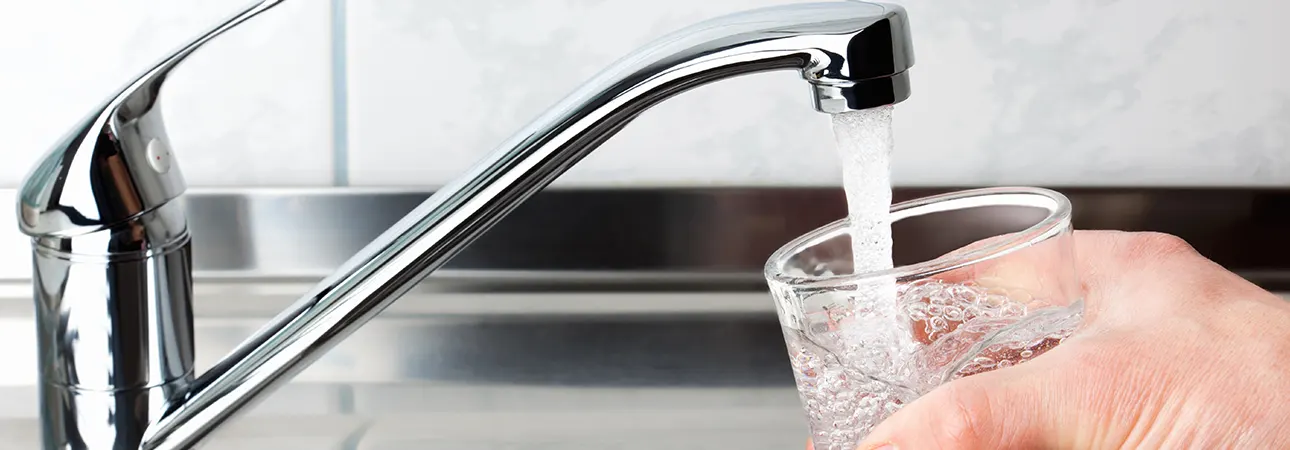Fluoride is one of the most important and commonly used tools we have for dental protection. It’s been widely studied, is used in community water fluoridation, and has been added to toothpaste for decades because of its ability to strengthen tooth enamel and prevent tooth decay.
But many people wonder: Is there a difference between using fluoride toothpaste at home and receiving an in-office fluoride treatment from your dentist? The short answer is yes; both play a role in maintaining oral health, but they work at different strengths and are recommended in different situations. Let’s break down the differences and address some common questions.
What is Fluoride?
Fluoride is a naturally occurring mineral found in soil, rocks, and water supplies. In dentistry, fluoride is used because of its unique qualities.
- It strengthens tooth enamel, the hard outer layer that protects against cavities.
- Fluoride can help repair initial signs of tooth decay by replenishing lost minerals.
- It can also make teeth more resistant to acid attacks from plaque and sugars.
For most people, exposure to small amounts of fluoride through toothpaste and drinking water provides the optimal level of fluoride for daily protection. Dentists may recommend higher-strength treatments when additional support is needed.

Fluoride Toothpaste for Everyday Protection
Brushing with fluoride toothpaste is the cornerstone of cavity prevention. Almost every toothpaste on store shelves contains fluoride, unless it’s specifically labelled fluoride-free.
Levels of Fluoride in Toothpaste
The levels of fluoride toothpaste for children and adults are carefully regulated. Most toothpastes contain between 1,000 and 1,500 parts per million (ppm) of fluoride. For kids, the recommendation is to use only a pea-sized amount of toothpaste once they reach two years of age, and just a smear for children younger than that. This ensures they get the benefits of fluoride without the risk of swallowing too much.
Key Benefits of Fluoride Toothpaste
- Consistent daily strengthening of enamel.
- Reverses early stages of decay before cavities form.
- Easy, inexpensive, and widely accessible.
For most people, brushing twice daily with fluoride toothpaste is enough to maintain healthy teeth. But in some cases (like if you have a history of frequent cavities, dry mouth, or orthodontic treatment), dentists may recommend additional support.
In-Office Fluoride Treatments at Professional Strength
An in-office fluoride treatment is very different from brushing with toothpaste. These treatments use a much higher concentration of fluoride, often applied as a gel, foam, or varnish directly to the teeth.
Why Dentists Recommend Fluoride Treatments
- Higher strength: Professional applications contain much more fluoride than toothpaste, often by several thousand ppm.
- Longer contact time: Varnishes or gels coat the teeth, allowing the fluoride to absorb more effectively.
- Targeted care: This can be ideal for patients at higher risk of cavities, those with exposed roots, or weakened enamel.
Fluoride treatments are safe and quick, typically taking just a few minutes during a routine dental exam. The dentist may recommend them every 3, 6, or 12 months, depending on your oral health needs.
Why Both Types of Fluoride Treatment Matter for Oral Health
- Everyday defence: Brushing with fluoride toothpaste keeps your teeth strong against daily challenges like acids, plaque, and sugar.
- Extra protection: In-office fluoride treatments are like a boost for patients with higher cavity risk or weakened enamel.
- Comprehensive care: Together, they provide both consistent daily support and targeted reinforcement, helping you maintain a healthy smile for life.
Concerns About Fluoride and the Thyroid
Some people worry that high levels of fluoride may interfere with the thyroid. Research has shown that optimal levels of fluoride found in community water fluoridation, toothpaste, and dental treatments are safe. Problems generally only arise with high levels of fluoride exposure far above what’s used in oral health care.
If you have a history of hypothyroidism, it’s worth discussing concerns with your dentist. If you prefer, there are fluoride-free options available, but it’s important to weigh the proven cavity-preventing benefits of fluoride against the minimal risks when used appropriately.
Dental Fluorosis
One real concern is dental fluorosis, a cosmetic condition caused by children swallowing too much fluoride while their teeth are developing. This is why dentists emphasize:
- Children under 3 years of age should use just a smear of toothpaste.
- Kids between 3–6 should use a pea-sized amount of toothpaste.
- Parents should supervise brushing to ensure children don’t swallow toothpaste.
With proper supervision and the right-sized amount of toothpaste, fluorosis can be prevented while still delivering the benefits of fluoride.

How to Check Fluoride Levels in Your Water
Because fluoride naturally occurs in many water supplies, and some municipalities add it through community water fluoridation, it’s helpful to know how much you’re already getting at home.
- Check your local report: Most municipalities publish an annual drinking water quality report that lists the parts per million (ppm) of fluoride present. The optimal level of fluoride for cavity prevention is usually around 0.7 ppm.
- Ask your water supplier: If you live in a rural area or draw from a private well, you can contact your local water supplier or your regional health authority for testing information.
- Home testing kits: For private wells, you can also purchase fluoride testing kits or send samples to a certified lab.
- Consider your family’s age: Children under 6 years of age may need different approaches. For example, if your water already has the optimal level of fluoride, your dentist may suggest a small amount of toothpaste and skip additional professional treatments. If levels are very low, both fluoride toothpaste and in-office treatments may be recommended to ensure strong oral health.
Knowing your water’s fluoride level helps balance everyday exposure with the right dental care. Too little fluoride may leave your teeth vulnerable, while high levels of fluoride above the recommended range could increase risks like dental fluorosis. Your dentist can help review these levels and decide whether additional support, like professional fluoride applications, is appropriate.
Final Thoughts on Fluoride Application
So, what’s right for you when it comes to fluoride toothpaste and an in-office fluoride treatment? Toothpaste delivers everyday protection, while professional strength treatments offer high-concentration support when you need it. Used together, they can form an effective strategy to prevent tooth decay and protect your tooth enamel.
If you’re unsure whether you or your child would benefit from professional fluoride treatments, talk to your dentist. At Dentistry Thirty Two, we’ll assess your needs, answer your questions, and recommend the right approach to keep your smile strong and healthy.

